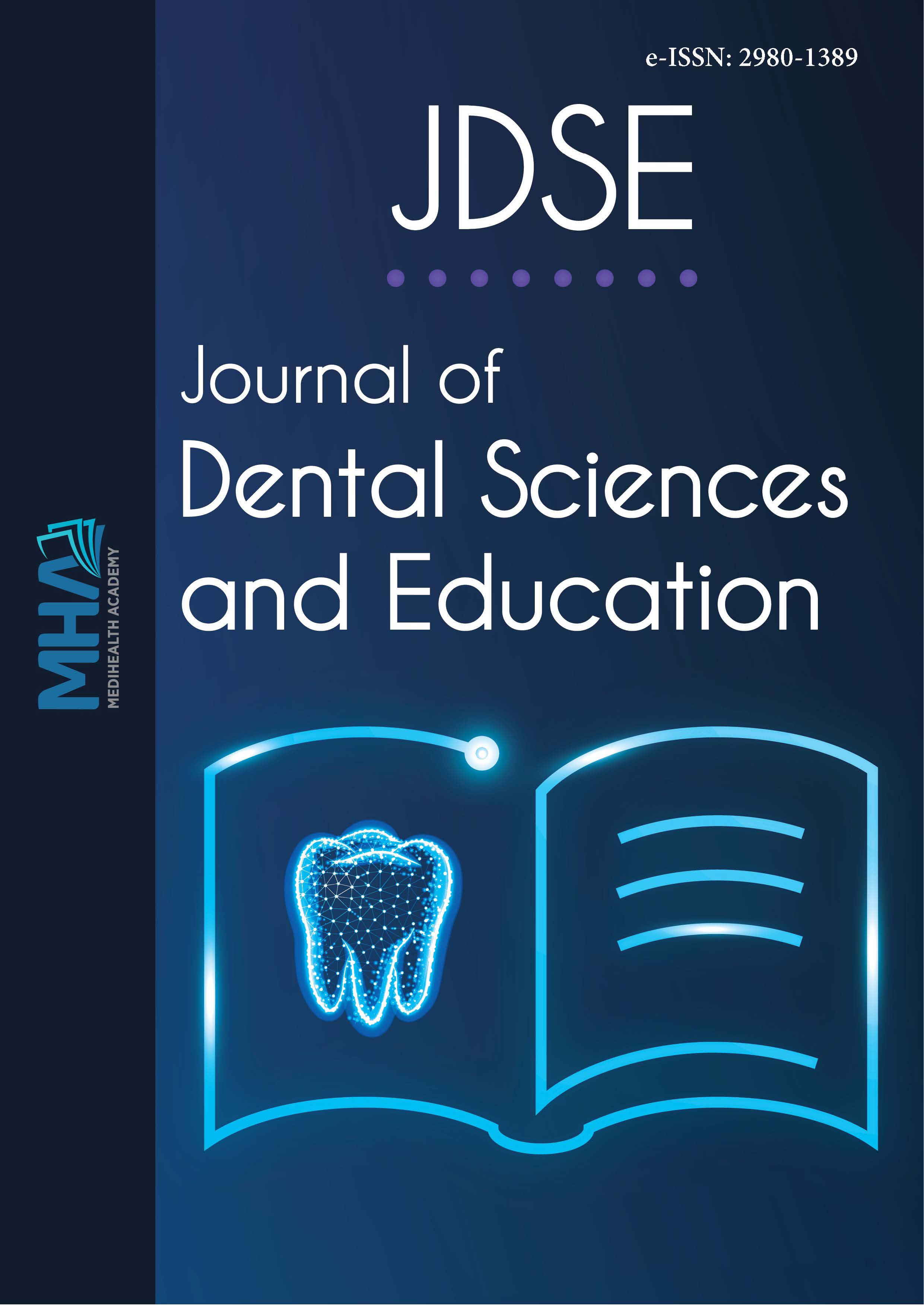Journal of Dental Sciences and Education
The Journal of Dental Sciences and Education deals with General Dentistry, Pediatric Dentistry, Restorative Dentistry, Orthodontics, Oral diagnosis and DentomaxilloFacial Radiology, Endodontics, Prosthetic Dentistry, Periodontology, Oral and Maxillofacial Surgery, Oral Implantology, Dental Education and other dentistry fields and accepts articles on these topics. Journal of Dental Science and Education publishes original research articles, review articles, case reports, editorial commentaries, letters to the editor, educational articles, and conference/meeting announcements. This journal is indexed by indices that are considered international scientific journal indices (DRJI, ESJI, OAJI, etc.). According to the current Associate Professorship criteria, it is within the scope of International Article 1-d. Each article published in this journal corresponds to 5 points.

